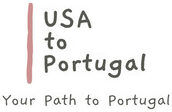You haven’t been to Portugal until you’ve stood at a pastry counter at 9am with powdered sugar on your chin, egg custard in your soul, and the subtle realization that whatever diet you were on has just died quietly in the alley behind the bakery.
This is the story of the Pastel de Nata, or as I like to call it:
“The tiny golden tart that gaslights you into thinking one is enough.”
🇵🇹 A Little Custard. A Lot of History.
Born in the hallowed halls of the Jerónimos Monastery in Lisbon, the pastel de nata was first whipped up by monks with an overabundance of egg yolks and not enough hobbies. The whites were used to starch their robes, and the yolks? They made magic. Flaky, caramelized, mildly heretical magic.
When the monasteries got the boot in the 1800s (because, well, Portugal), the recipe was sold to a nearby sugar dealer who saw the vision. That vision became Pastéis de Belém, the original bakery where people now stand in line like they’re waiting for Beyoncé tickets.
They guard the recipe like it’s nuclear launch codes. Allegedly, only six people in the world know it. Which feels both exclusive and oddly convenient if you want to start a Netflix docuseries.
🧠 “It’s Just an Egg Tart,” You Say. Oh, Sweet Summer Child…
Technically yes. But also, shut up.
Imagine:
- Buttery, laminated dough with layers so crisp you could hear them in a silent monastery.
- Silky custard that’s not too sweet, kissed by vanilla and just enough citrus to remind you that life is fleeting.
- The blistered top, caramelized like crème brûlée after a bar fight.
Served warm. Always warm. Or the monks will haunt you.
One is a snack. Two is a religion. Three is a problem — that you’re totally fine having.
🍷 When and How to Eat Them (Trick Question: Always)
Portuguese people eat pastéis de nata anytime:
- Breakfast? Yes.
- Midday treat? Of course.
- After dinner? Duh.
- At a funeral? Hypothetically, sure. (If it’s not your own.)
The proper way is with a bica (an espresso strong enough to make you see through time), ideally standing at the counter of a corner café run by someone named Maria who’s been judging you silently since 2003.
✈️ Where to Get Them (If You’re Not in Lisbon)
If you’re abroad and you see something labeled “Portuguese Egg Tart” in a sad glass case under fluorescent lights, I want you to:
- Walk away.
- Apologize to your taste buds.
- Book a flight.
That said, some bakeries do a decent job — especially if they were founded by actual Portuguese expats or people who swore a blood oath to do it right.
Pro tip: If the crust isn’t shattering like a pie dropped from a rooftop, you’re being lied to.
😬 Calories?
Don’t ask. Seriously. That kind of negativity doesn’t belong here.
🎯 Final Thoughts
The pastel de nata isn’t just a pastry. It’s a warm, crispy, custard-filled middle finger to restraint. It’s Portugal saying, “We colonized half the world for spices — but we chose sugar and eggs, and we chose wisely.”
Eat it fresh. Eat it hot. And when you inevitably have a second (and third), just shrug. You’re not weak. You’re in Portugal.
And Portugal always wins.

